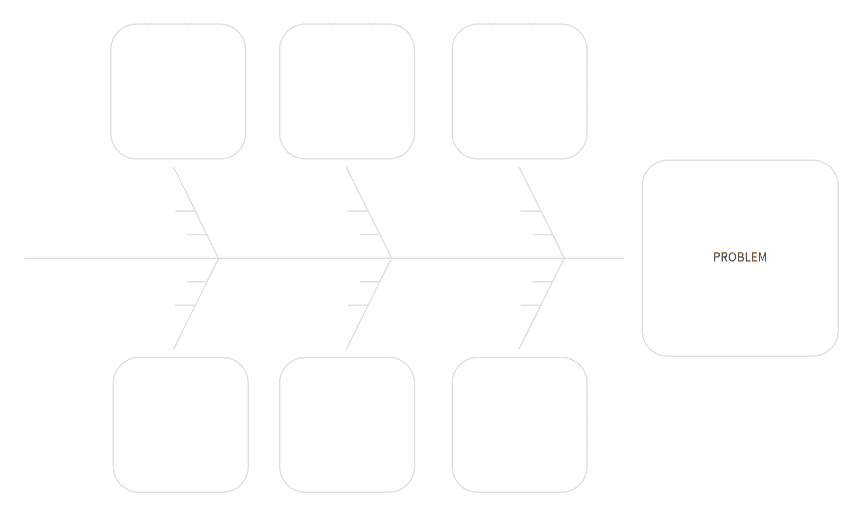Fishbone Diagram introduction
The Fishbone Diagram (or cause and effect) method is used to visualize the cause of a problem, so that the problem can be solved more effectively. It is also called the cause and effects diagram or the Ishikawa diagram, named after the inventor Kaoru Ishikawa. Professor Kaoru Ishikawa devised the cause and effect analysis in the 1960s, after which the technique was published in his book entitled; “Introduction to Quality Control”.

The diagram was originally developed as a tool for quality control. Today it is also used for product development, finding the root cause of a problem, finding bottlenecks in processes and providing insight into why a process is not working.
The diagram is also very useful when there is little quantitative data available. Because all possible causes of a problem are visualized, the core is made more insightful for the team and it also offers the opportunity to respond more effectively to the cause. The diagram asks the team to analyze, collaborate and prioritize until the root cause is found.

Sidenote: Use the Fishbone diagram in conjunction with the 5 Why’s method to dig deeper into the problem and identify possible new causes.
Template
Download Template
Fishbone DiagramOnline Templates
Executing the Method
-
Step 1: Define the problem
First, write down the problem and explain how and where it occurs, including an explanation. The CATWOE guideline can help to define the problem in the right way. CATWOE helps to view the problem from the perspective of Customers, Actors in the process, the Transformation process, the overall World view, the process Owner and Environmental constraints.
-
Step 2: Fill in the Fishbone
Use a sheet of paper on which the fishbone can be drawn (see template) or use the diagram from the template. Write down the problem on the right side of the paper, the head of the fish. The backbone of the fish is used to develop ideas and to visualize elements of the problem.
-
Step 3: Identify Factors
To understand the problem, all of the factors that make up the problem must be identified. Brainstorm all possible factors that could affect the situation. Think of users, people, methods, materials, marketing, etc. Categorize these factors and write them down piece by piece in the backbone of the fish, where each "bone" stands for one category. Try to make up to ten categories.
-
Step 4: Determine the Causes
Brainstorm by factor about the possible causes of the problem related to the category. These become the "bones" of the fish and serve as the basis for identifying the source of the problem. Write down all possible causes per category in the "bones".
-
Step 5: Analyze Chart
When all possible causes have been written down per category, it is time to analyze the diagram. All possible causes of the problem have been made transparent. Analyze the most likely cause of the problem. It may be possible to investigate the most likely cause further.
